Author Bio
Burkhard Berger is the Guest blogger at DSIGNS. He helps innovative B2B companies implement revenue-driven SEO strategies to scale their organic traffic to 1,000,000+ visitors per month.
People use Google for almost everything: finding a nearby restaurant, shopping online, or hiring services. That's why running effective ad campaigns on Google Ads is crucial – it's an exceptional chance to get noticed.
We'll explore what makes an effective ad campaign. Our goal is to guide you in making a strategic approach to Google Ads so you can maximise your budget’s value while aligning marketing efforts with your business objectives. We'll give you practical tools, techniques, industry best practices, and real examples to help you
optimise your brand's impact.
When you're done reading, you'll have a toolkit filled with practical insights to make your Google Ads campaigns work better. Let's get started.
With the right strategy, Google Ads can deliver impressive results (traffic and return on investment). It can also enhance brand recognition and build customer loyalty. You, too, can enjoy these benefits using these proven tactics.
When you define your goals, you determine what you want to achieve with your advertising campaign. Once you do, it serves as a compass for the rest of your campaign planning.
Setting clear goals is the first step in creating a Google Ads campaign. They offer 6 distinct campaign goals to speed up the decision-making process. Remember to
choose 1 goal per campaign.

Google Ads has individual options for each goal, which its system will display when setting up your effective campaign. Each goal comes with its own specific strategies and tactics for achieving huge success. For instance, your eCommerce business chooses the Sales goal to boost your online revenue.
You can choose from the 3 campaign types to achieve your desired outcome, but the recommended choice is
shopping campaigns. The reason: it enables potential customers to shop straight from the search results page. Kay Jewelers sets a great example for this.
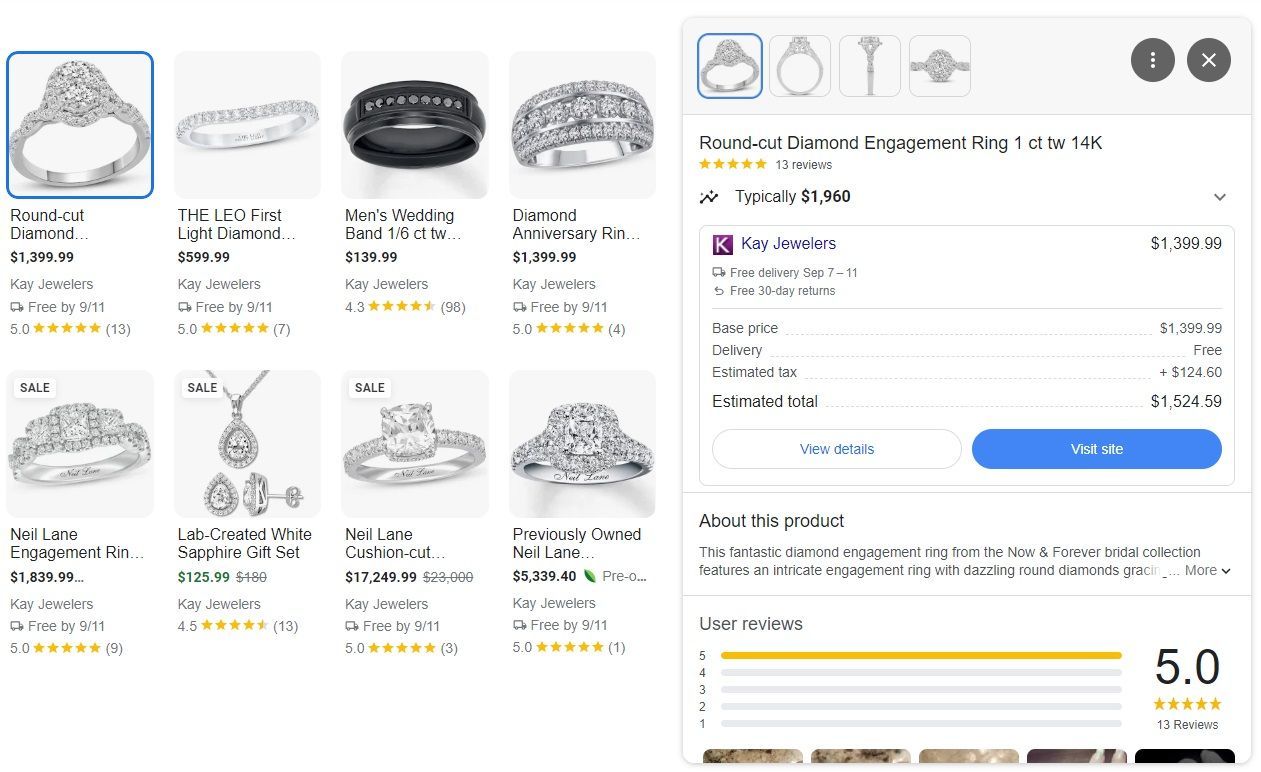
The brand uses professional product images to make it more enticing to consumers. They display each product from multiple angles (front, sides, and close-ups) to give consumers a better understanding of what they are buying. They also use a white background to focus the customers' attention on the product itself.
You can turn your product listing into a successful ad campaign too when you follow these best practices:
Choosing the right campaign type gives you a higher chance to reach the people who want to engage with your ads and convert. It matches perfectly with your target audience's interests, needs, and behaviors. As a result, it will increase your campaign's click-through rates (CTR) and conversion rates.
Additionally, search engines often reward ads that provide a good user experience and a higher Quality Score with a lower CPC. This means you pay less for each click on your ad.
Google Ads provides several campaign types, including the Shopping campaign mentioned above. We'll discuss the 2 most popular campaign types, including their appropriate goals and best practices.
Search campaigns are the standard text ads you've often seen in the search results. It
attracts more visitors to your website when they search for specific keywords or phrases on search engines.
Since it's keyword-based, you can use tools like Google's Keyword Planner, SEMrush, or Ahrefs to help you discover relevant keywords. Don't just focus on short, generic keywords. Long-tail keywords and any keywords your competitors are targeting are also highly valuable. They often have lower competition or higher conversion potential (sometimes, it can be both).
Since eCommerce sales are growing, many entrepreneurs will find a reliable marketplace to sell physical and digital goods. Use this effective advertising campaign to get a competitive edge if you offer one. Here's the search result for a long-tail keyword
online marketplace to
sell digital products.
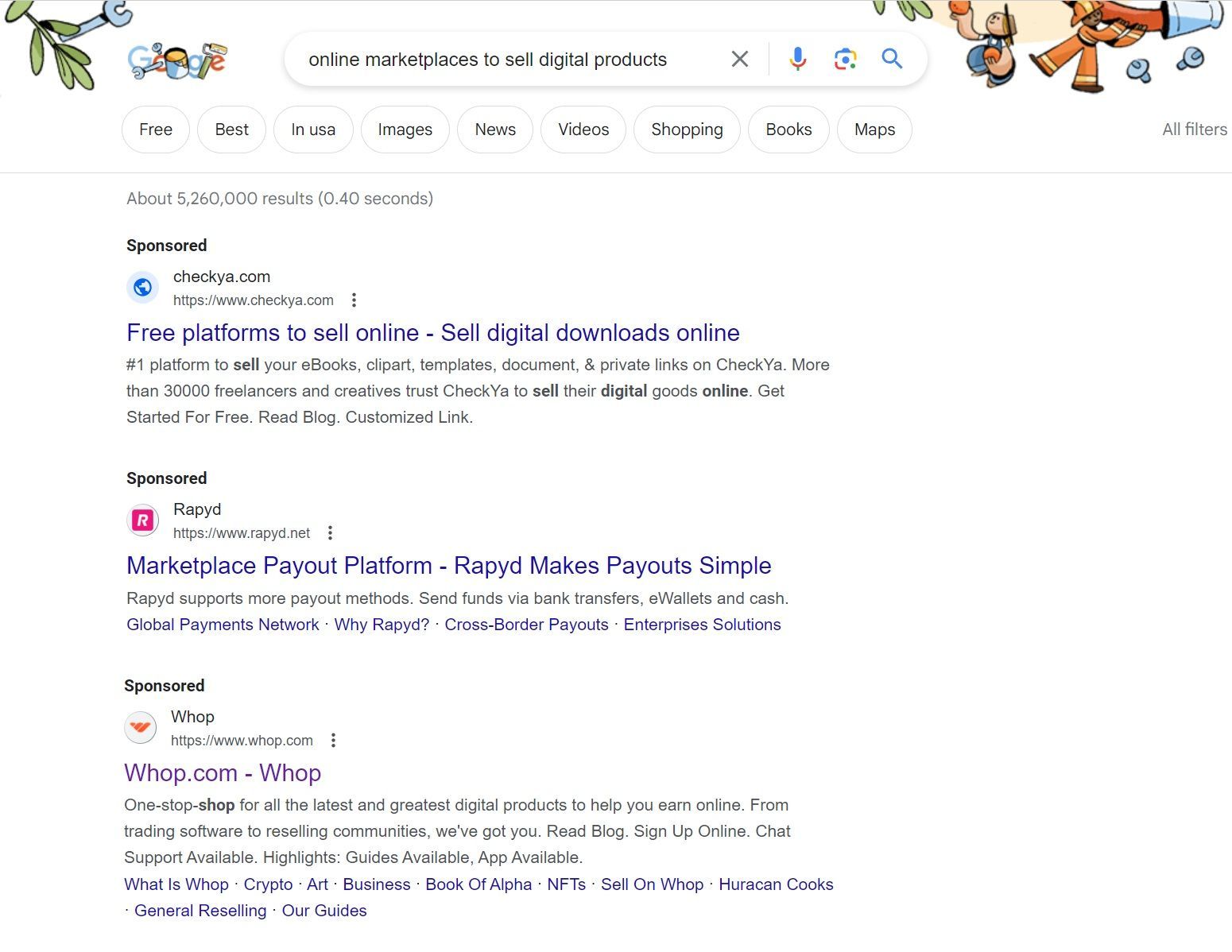
You’ll know it's a successful advertising campaign when it appears on the search result's top position (1-3). Ads in higher positions are likely to get noticed and receive more clicks. It's still considered good if your page falls in the middle of the page (4-6). You can add Dynamic Keyword Insertion (DKI) to improve your online marketplace's position further.
When a consumer's search query matches one of your campaign's keywords,
DKI automatically replaces a portion of your ad text with that keyword. It makes the ad appear more personalised, making it highly relevant. Make sure to set up a fallback text if a user's search query is too long for the DKI placeholder.
Display campaigns are the image ads you've often seen in search results, websites, and Gmail inboxes. It
increases your brand's presence across the web. As the name implies, it heavily relies on visuals. So, make sure to invest in high-quality images and graphics.
It doesn't have to be over the top; make sure it aligns with your brand identity and resonates with your audience. Take the Coach Foundation, for example. The brand uses a simple and neat banner ad design to introduce its comprehensive guide on
how to start a coaching business. They also write a persuasive advertising copy that complements their visuals.
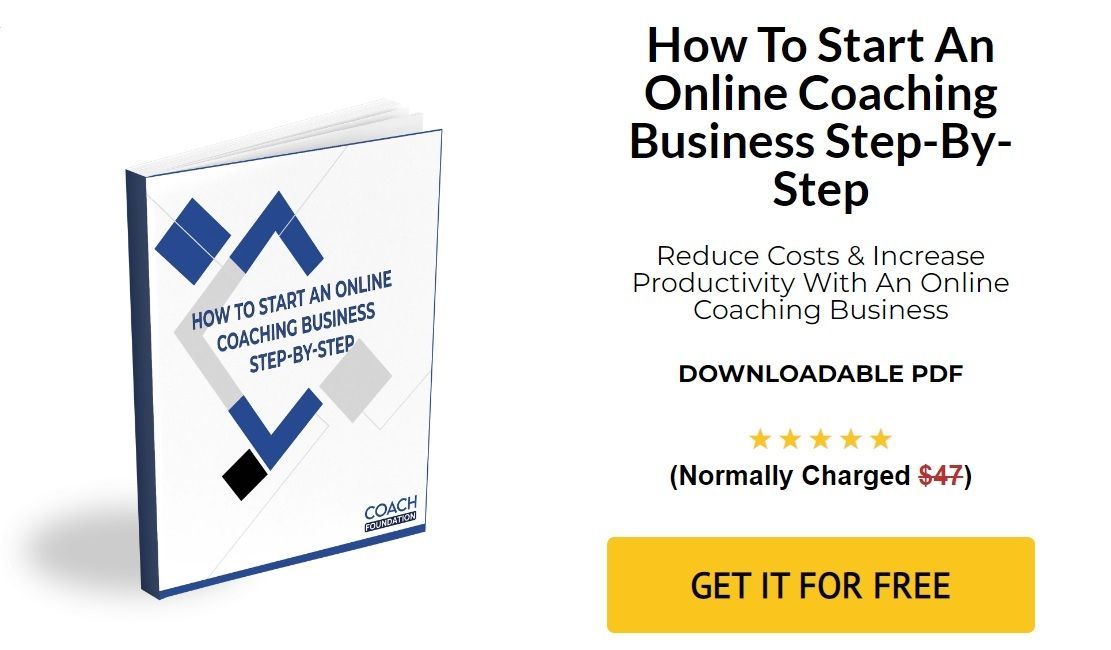
The brand uses the copy to communicate its offer's unique value and why consumers should engage with it. It may be a simple message, but they ensure it addresses the consumers' needs. This showcases the brand's dedication to offering real solutions to their problems.
With the rise of video-sharing sites and social media platforms, videos become the most effective mediums for advertising and brand storytelling. People find it more engaging, memorable, and shareable. So, if you want to spread your brand's powerful message to a broader audience, add compelling videos to your ad campaigns.
You can get some inspiration from
Dove's famous campaign for real beauty. The brand understands that the beauty industry has set unrealistic beauty standards for years and even provides toxic beauty advice. So, they write real stories from ordinary people, encouraging others to create their definition of beauty. Ultimately, embrace one’s natural beauty.
You probably think that video ads are expensive and complex to create. But that's not true. You can use design tools, like Adobe Illustrator and Figma, to bring your creative vision to life. From product prototypes to engaging 3D animations, these tools will enhance your campaign's effectiveness and engagement.
Make sure to
create an informative, entertaining, or emotionally compelling video to pique your audience's interest. Keep it short and engaging (15 to 30 seconds) to ensure you'll maintain engagement throughout the ad.
Additionally, the Google Ads video campaign makes the process easy to ensure that all first-time or experienced advertising professionals can do it. Start your creative advertising campaign using video ads. Like most effective ad campaign types on Google Ads, choose one goal when setting up. You can choose
sales, leads, website traffic, or awareness and consideration. Once you have one, choose an eligible ad format:
Artificial Intelligence (AI) is changing how advertising works. Nowadays, online advertising platforms use this technology to enhance the user experience and maximise ad performance. Google is no exception and even goes the extra mile to support advertisers in maximising their results and ROI. They deliver their support through Google AI.
Google AI works wonders with Performance Max, Search, and Display ad campaigns. Upload your ad assets (descriptions, headlines, images, logos, and videos), and Google AI will generate various ad combinations. These combinations are compatible for display on your apps, Gmail, YouTube, and websites.
Google AI also adjusts your ad's appearance, format, and size to fit all available ad space. This means you can run multiple ad campaigns in one go. For instance, you can have a banner ad on one website and a dynamic text ad on another. If you
run a local ad campaign, Google AI can also optimise your ads to appear across search results and Google Maps.
Lucy Aylen, founder of Never Fully Dressed, is one example of successful campaigns using Google AI. She uses the Performance Max campaign to promote her products on Search, Display, and YouTube ad spaces. You can watch it and learn what she did to achieve an 890% return on ad spend.
Landing pages are a valuable component of Google Ads. They make sure to provide what you promised in your informative advertising campaigns. Ultimately, they convert your visitors into leads or encourage them to take a specific action.
Landing pages serve various purposes and you can tailor them to specific digital marketing campaigns. Let's explore 3 popular digital marketing strategies and how landing pages can serve their purposes:
The landing page for SEM campaigns (paid search ads) serves as the bridge between the user's search query and the advertiser's offer. Align its content with your target audience's search intent and the ad's keywords to achieve success.
Since the self-service analytics market is growing (2023 to 2030), many will soon search and adopt these tools. If you offer a metrics intelligence platform or similar, use this landing page to introduce it. Here's what the search result looks like when you use a commercial intent keyword "metrics intelligence platform."
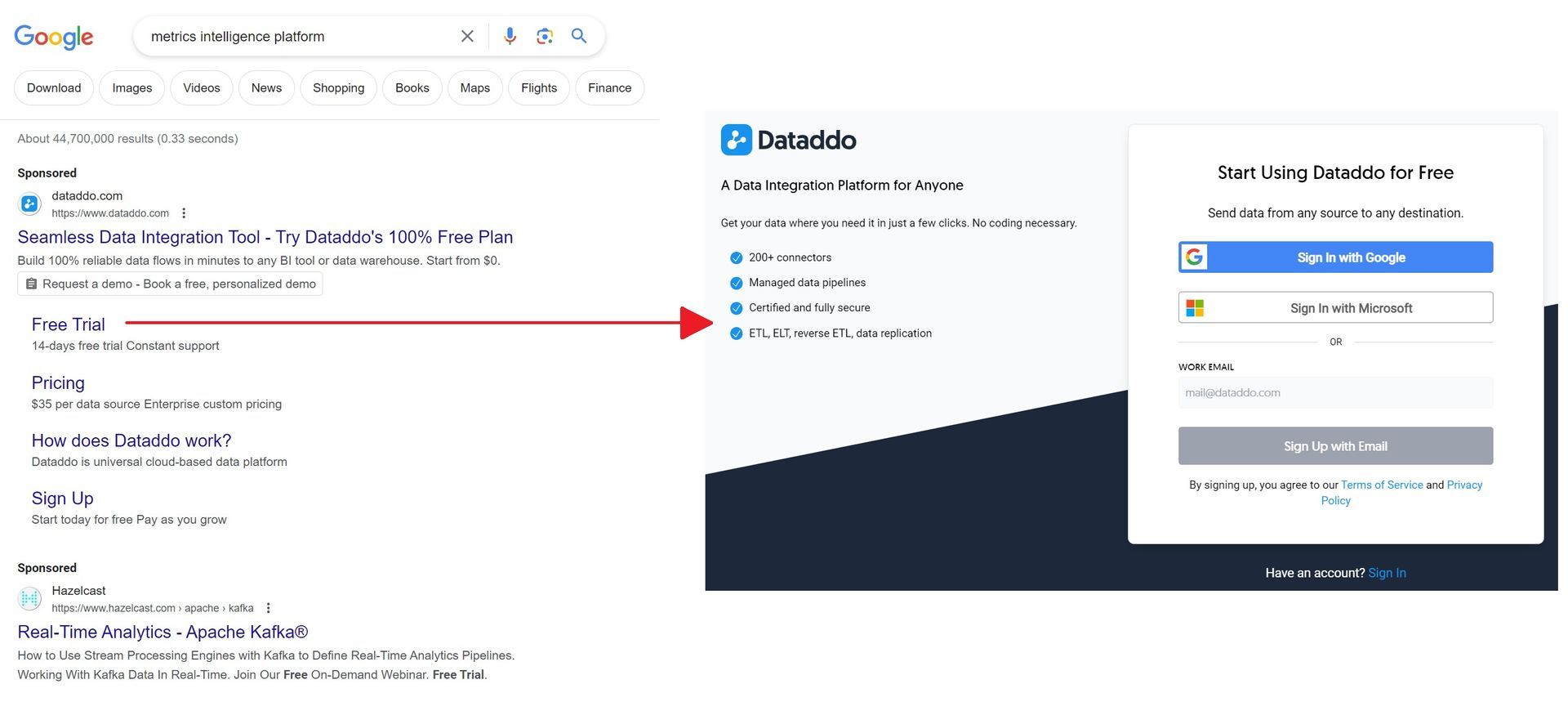
The SEM campaign's goal is to guide visitors into a specific action. Since your effective ad campaign aims to introduce your product, you can set the desired actions as signing up for a free trial. It will give your potential customers a firsthand experience of your product, risk-free. If you don't offer a free trial/plan, set the actions to request a demo.
Trace offers a free demo for its
self-service metrics intelligence platform. They keep it simple and clean. They don't want to overwhelm their visitors with too much information. They also keep their message concise and add a prominent CTA.
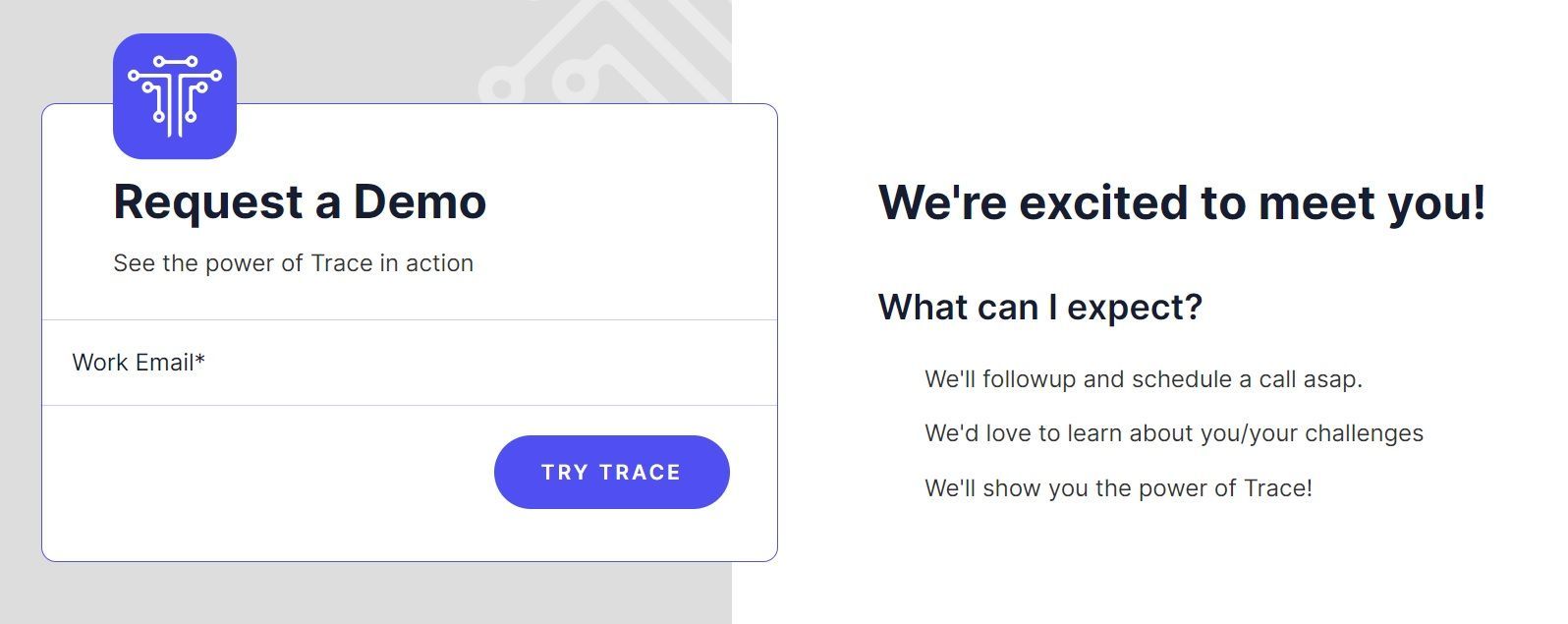
The email marketing campaign is a strategic approach to reach subscribers or potential customers through personalised email messages. They address the recipients by name and tailor the content to their preferences.
Not all customers are the same. So, you should sort your target recipients into smaller groups using
segmentation. You can organise them based on specific characteristics, locations, or behaviors.
Email marketing is widely used across various industries, but the most popular is
eCommerce retailers. Store owners often use it to promote products, send personalised recommendations, and recover abandoned shopping carts. Some use it to announce upcoming sales and discounts. Take 3Wishes, for example.
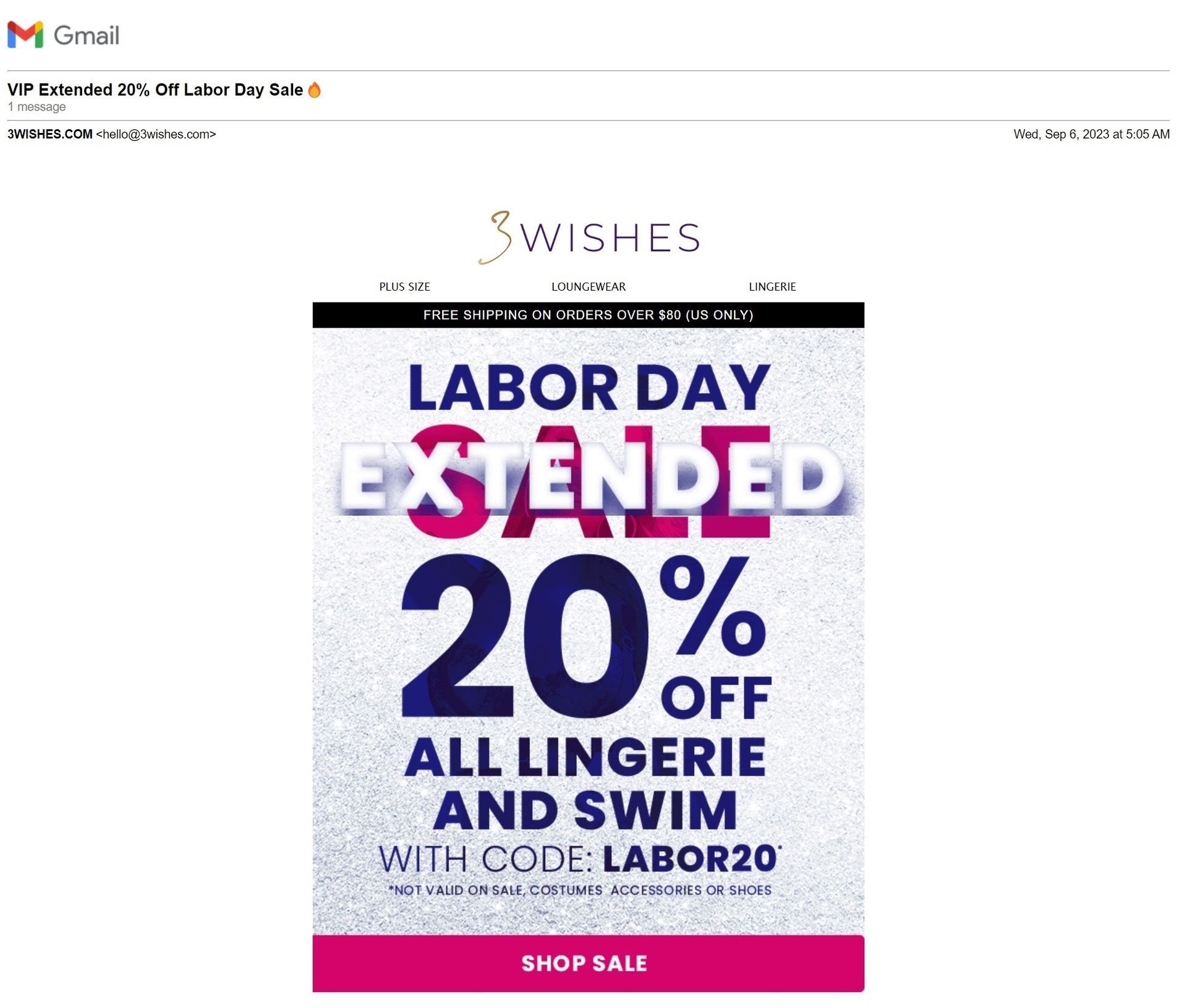
When you open the email, it talks about the limited-time Labor Day discount on their lingerie and swimwear collection. Click the Shop Sale button and the recipient can claim the discount. To make sure they will convert, 3Wishes includes the following on their landing page:
Creating quality content is crucial for both human readers and search engines. They keep readers engaged to increase their trust in your brand while search engines consider your landing page’s quality and relevance.
The content you can create takes various forms. WithVector, a mobile-first workflow and transportation management platform, uses its blog to promote the following:
The offer they promote depends on the blog post's topic. The offer above is dedicated to their
bill of lading legal requirements guide. This landing page uses subheadings and bullet points to break up the content. This makes it easier for visitors to read and find the information they want.
They also add visual elements like images and illustrations. It enhances the landing page's appeal and helps explain complex concepts. Visuals are also aligned with the content to provide further context. Lastly, all visuals come with the brand's logo.
Adding the brand's logo to the visuals
leaves a lasting impression. Remember to include alt text to help Google recognise the brand in image search. You can also take McDonald's 2014 "Our Food, Your Questions" campaign for inspiration.
It received massive success because of its great effort at transparency and engagement. Its catchphrase stuck up that it has become a point of cultural reference today. Other brand names that are considered cultural icons in the world of advertising are the following:
After launching your ad campaigns, you'll need to measure its success. Google Ads offers various free tools to help you understand what's working and what isn't in your ad campaign.
Conversion tracking is your go-to tool to track and analyse how real people interact with your ads. It provides insights into which ads, keywords, and targeting options drive conversions on your website or app. When using this tool, you need to do 3 things to make the most of it:
Conversion actions refer to the specific customer activity valuable to your business. Here are the actions you can choose from:

Now that you know which actions to add, you can assign monetary values to each conversion action. It will help you understand the economic impact of your digital advertising campaigns and allocate your budget wisely.
How do you determine the value for each conversion?
Analyse your historical sales data. Let's say you want to determine the average value of a "Purchase" conversion. You can calculate it using this simple formula:
Average conversion value = Total revenue ÷ Number of conversions.
So, if your eCommerce site has a total revenue of $10,000 from 100 monthly purchases, the average purchase value would be $100. Make sure to keep an eye on your actual sales data and conversion performance over time. If you notice changes in the average purchase value, adjust the assigned value accordingly in your Google Ads settings to maintain accuracy.
Ensure that you correctly install the conversion tracking code on your website. The good news is that you can install it yourself. Google provides detailed instructions for different platforms (e.g., WordPress, Shopify) to help you set up tracking correctly. However, the most recommended method is using Google Tag Manager (GTM).
GTM offers a centralised platform for tracking code deployment. It lets you update the tracking tags without modifying your site's code. But you can freely use Google Analytics and Global Site Tag (gtag.js).
Running an effective ad campaign isn't just about luck. It involves patience and a solid commitment to solving your customers' problems. You've got to be willing to test different ideas and strategies, learning from what works and what doesn't. Don't be afraid to think outside the box and try new approaches.
This valuable guide equips you with actionable strategies, best practices, and real-world examples. Combine all these elements with your future campaigns, and you're on the right path to advertising success. Don't forget to take advantage of Google campaign and measurement tools. They can simplify the process, maximise your results, and make a stronger connection with your customers.
Ready to take your business to the next level?
Partner with DSIGNS, your local experts, and start reaching your target audience using smart ad campaigns.

Author Bio
Burkhard Berger is the Guest blogger at DSIGNS. He helps innovative B2B companies implement revenue-driven SEO strategies to scale their organic traffic to 1,000,000+ visitors per month.

Thank you. Someone from the office will be in touch with you.
All Rights Reserved | DSIGNS AUSTRALIA
We use cookies to ensure that we give you the best experience on our website. To learn more, go to the Privacy Page.